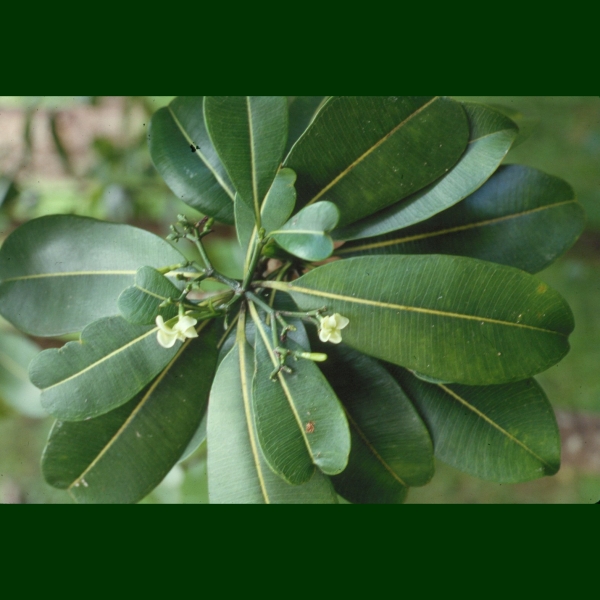 Hawaiian Name(s): hōlei
Hawaiian Name(s): hōleiScientific Name: Ochrosia (4 species)
Vernacular Name: none
Family: Apocynaceae
Status: endemic
Authority: O. compta K.Schum., O. haleakalae H.St.John, O. kauaiensis H.St.John, O. kilaueaensis H.St.John
Description: Tree/shrub: O. compta 3-10 m, O. haleakalae 2-8 m, O. kauaiensis6-8 m, O. kilauaensis 15-18 m.
Habitat Four species that are most often found in dry habitats, occasionally in mesic forests. O. compta most common (Wagner et al. 1990:216–219).
Medicines: Used in the treatment of ‘ea and pa‘ao‘ao. The treatmant uses the inner part of the holei fruit, together with ‘ilima flower buds (Sida fallax) and noni flowers (Morinda citrifolia). To release pus from the body, hōlei bark and leaves are used in a steam bath (Chun 1994:93–94).
Non Medicinal Uses: The bark of the stem and roots can be used to stain kapa (yellow) (Krauss 1992:65; wood used as gunwale of canoe (Krauss 1993:50).
Specific gravity of wood: unknown
Famous Locations:
Mele:
`Ōlelo Noeau:
Dye Color and Parts: Yellow (stem & root bark)
Kino lau:
Location on Bishop Museum Kalihi Campus:
Propagation Information: Hawaiian Native Plant Propagation Database.
Native Plants Hawaii.
Seed: Seed length approximately 50 mm. Photograph: H.Lennstrom. Species: O. compta.
Click for image
